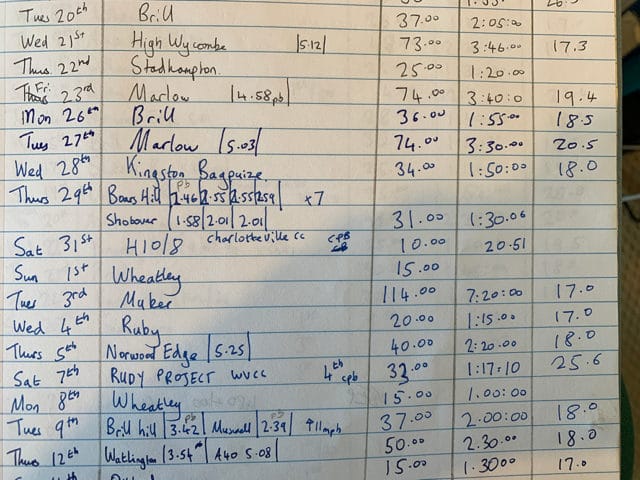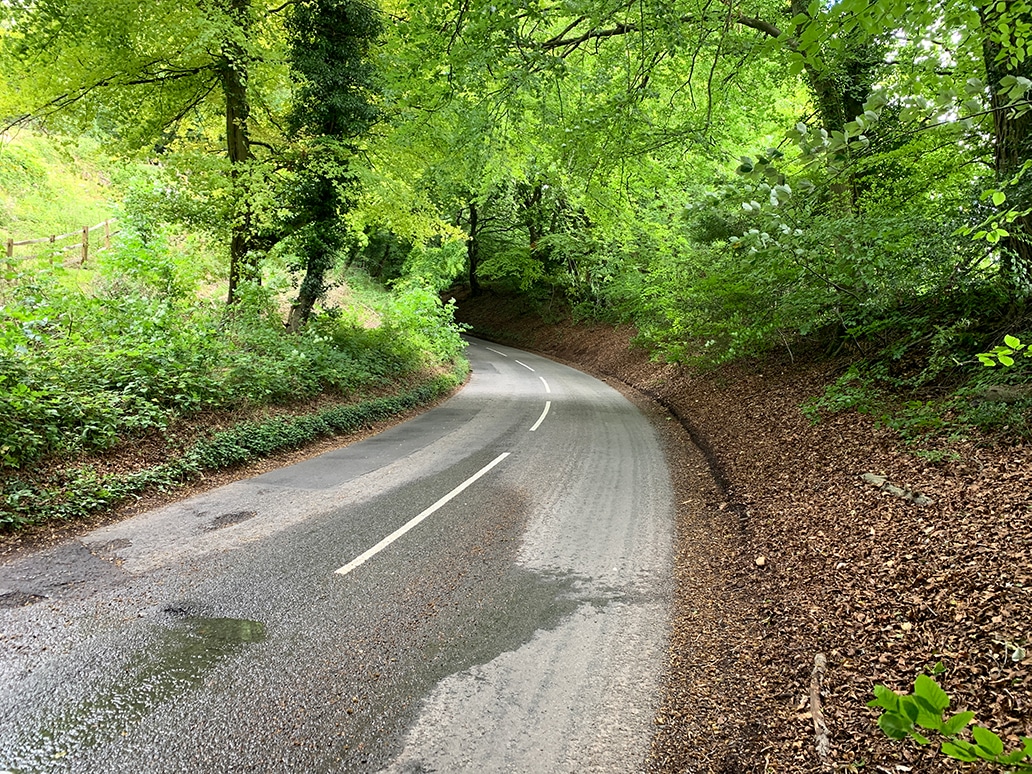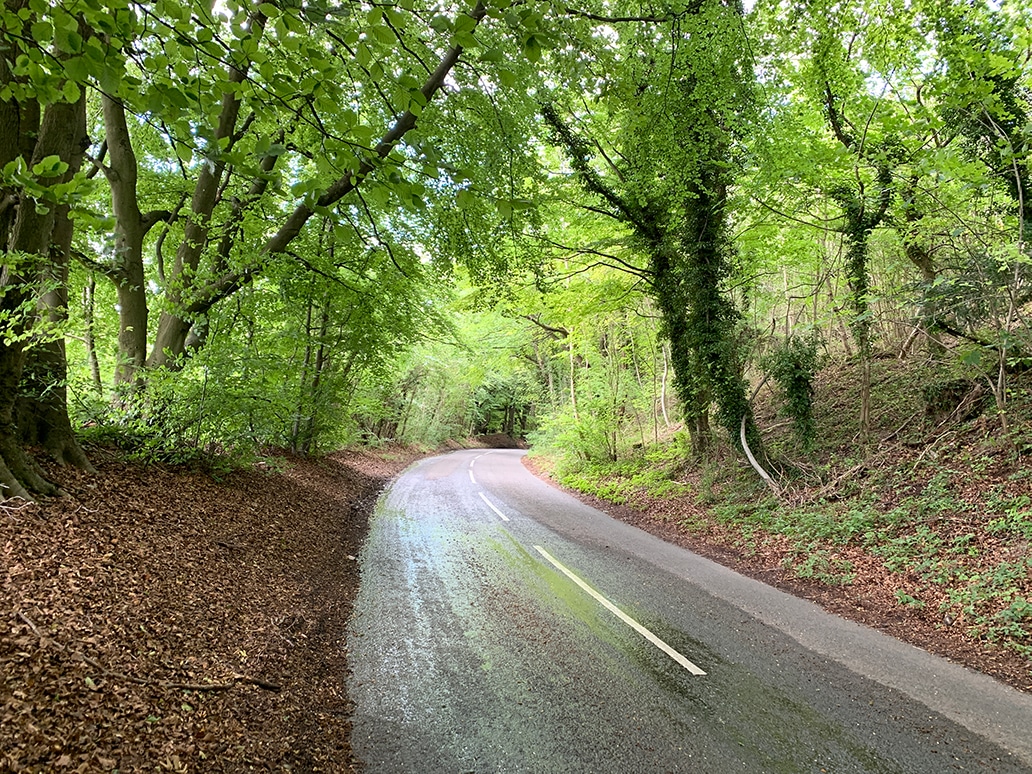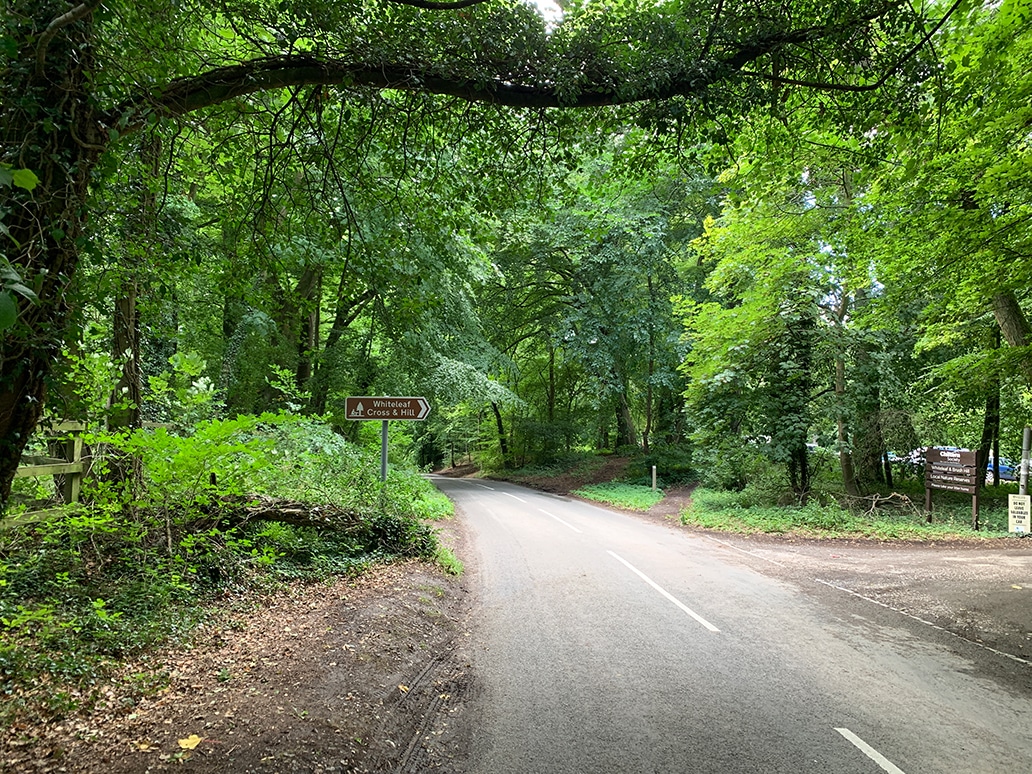
This is my training diary from 2010. In those days I still manually checked and recorded my time going up hills. You had to choose a suitable start and finish point, then manually check your time, using a lap counter. I would then write down all the hill climb times in my training diary so I could see if I got a pb. I remember many years of not having a lap counter – just the timer on a bike. So I would wait for the timer to get to an exact minute and then start the effort (sometimes soft pedalling waiting in anticipation). At the finish of the climb, you needed to do a bit of mental arithmetic 34.00 start – 36.45 finish. It was surprisingly hard work when you’ve just done a hill climb effort. To spice things up, I sometimes got bored with waiting for the minute to come around and started on 34.30. Try calculating 34.30 – 36.23 when you’ve just blown your lungs away. (and then you have to remember your time. After finishing a climb I would be repeating 5.13 like a mantra for several minutes so I didn’t forget!)
The biggest problem though with manually timing your efforts was having a consistent start and finish point, you might choose things like ‘tree to tree’ – ‘signpost to signpost’. But, when you’re doing a big effort, it was very tempting to almost unconsciously choose a different tree or different signpost. I used to often measure my efforts on Aston Hill on the A40; and after a few years, I realised my ‘hill climb course’ was getting shorter and shorter – with every year. It wasn’t a conscious decision, it was just that the mind played tricks on you, and it gave an excuse to take a different marker each time. It was one way to get a pb I suppose!
Strava and Garmin have taken all the angst out of measuring your hill climb efforts. The segment never gets shorter, and it is a very convenient way to measure hill climbs. Before Strava I probably had about 7 hills, I measured personal bests, but now with Strava, there is almost an unlimited number to compare your efforts. Because it is so easy to measure personal best times, it is fun to train on different hills. It means you can always choose a hill where there is something of a tailwind on. (no one does hill climb intervals into headwinds do they?)
The other thing about Strava, of course, is that you don’t just get personal bests (pb) but you compare against other riders too. This has its pros and cons. No matter who you are – you can guarantee at some point, someone will go faster than your pb. That is why I turn off all notifications and never read notifications on a matter of principle. If I get joy from setting a new pb, I don’t need to be told someone has gone faster.
Ever since I started cycling, that has always been the fascination of cycling – can I go faster? These days even the most marginal personal best is a huge source of satisfaction. In one sense it gets harder, but with innumerable segments there’s always something else to try.

Whiteleaf Hill
Whiteleaf is one hill I never used to visit in pre Strava days, perhaps I didn’t know about it so well. It is about 20 miles from Oxford as opposed to 15 miles to Aston Hill. But for the extra five miles, you get a much steeper and better hill. The route out from Oxford to Whiteleaf is quite flat, so it is a long warm-up, a long anticipation of the big effort to come.
Since getting back into cycling in recent months, like usual, I am keen to measure how I compare to previous years so I went to measure my time up Whiteleaf. From 2015, I had a time of 4.03 for the full hill. I really wanted to see how close I could get.
Now, after four years off the bike, I have gained some weight. Approximately 0.7 kg, so it’s not exactly like I’m buying bigger trousers or people are saying ‘how’s it going fatty Pettinger?’ (62.3 kg as opposed to 61.5kg). But, if you live in the hill climb world, 0.7kg is still about one second on a hill like Whiteleaf. So at the bottom of Whiteleaf I left a water bottle at the bottom of the hill to compensate for my extra weight and then began the big effort of the day.
The first thing I noticed is that starting the climb – the expected tailwind seemed to disappear and felt like a headwind. This was meteorologically impossible, but probably the mind playing tricks on me.

Whiteleaf is a tough hill because it is very variable gradient. There are 3 or 4 sections where it goes over 15% and you are out of the saddle pushing hard, then the gradient levels off and it’s tempting to go back into the saddle for a few seconds. But, when I did this, my momentum slipped and you were soon back out of the saddle again. Despite riding the hill many times, I’ve never quite worked out the best solution to be in the saddle or out. I would like to try again and stay out of the saddle for the whole last part of the climb. Going in and out all the time seems inefficient, but when you’re climbing that’s what I end up doing.

The good thing about getting to Whiteleaf is that there are plenty of other climbs in the vicinity. If you turn right at the top you go down Kop hill. So you can do a u-turn and go up Kop Hill again. Or if you turn left at the bottom of Kop hill you go up another climb called Wardrobes. On Wardrobes, there was a road closed sign which I ignored – as I was curious to know if it is OK to cycle through. The workmen stopped me for a bit and then waved me through. I would have been quite happy to turn around. But, the workman decided I can continue to climb up Wardrobes. After Wardrobes, if you take two left turns, you are soon coming back down Whiteleaf – which was convenient to pick up the water bottle I left earlier. It makes a good hilly circuit. In the past four years of non-racing I believe that there was a hilly time trial organised around Whiteleaf – I hope it is still going next year.
After that, I cycled through Chinnor (two sets of long traffic lights) which didn’t bother me as I saw it recuperation time before going up Kingston Blount. I made a good effort up Kingston Blount until traffic lights right at top of the steep part brought an unedifying conclusion to that effort. I stopped at traffic lights with heart-pumping madly. The A40 through Tetsworth is closed for 20 weeks (more closed roads) so I went back via Watlington hoping I would avoid meeting more road closed signs and traffic lights.
In the old days of measuring your own times, I would have known what time I did up Whiteleaf straight away, but this time I didn’t know until I uploaded.
4.02 – one second quicker than 2015. I knew it was a good decision to leave a water bottle at the bottom of the hill!

Yes to hilly TT round Whiteleaf – it’s a mega course, 3 laps, should be right up your street!
Course map & 2019 event: https://www.cyclingtimetrials.org.uk/race-results/19253#anchor
One for the diary in March 2021.
cheers Ryan